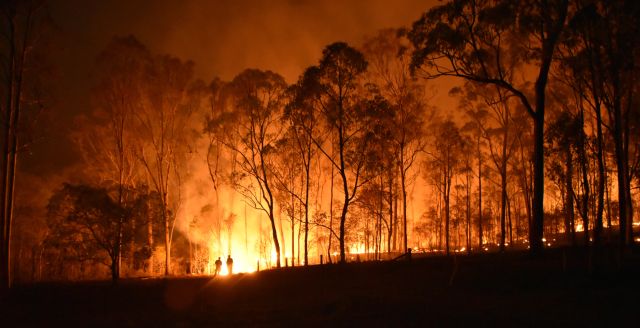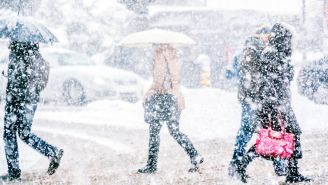Updated on August 16, 2023.
For people in the path of wildfires, protecting their property, their loved ones, and their own lives from the flames are understandably the most immediate areas of concern. What often goes unaccounted for are the health risks posed by smoke exposure to residents, to emergency workers, and even to people hundreds of miles away.
Find out how wildfires can affect your health and what you can do to protect yourself.
Wildfires are becoming more frequent and destructive
The United States has struggled with increasingly devastating and costly fire outbreaks in recent years. California, Arizona, Oregon, and Washington are among the western states where large, widespread fires have worsened air quality, destroyed land and property, and killed hundreds of people.
The rest of the country has begun to feel the burn, as well. Starting in spring 2023, smoke from Canadian wildfires blew across much of the northern U.S., degrading air quality to the point where New York City briefly notched the worst air pollution in the world. As weeks went on, cities like Detroit, Chicago—and even as far away as Charlottesville, Virginia—were similarly affected by hazy skies, smoky smells, and unhealthy air quality.
These types of fires are becoming more frequent and intense while lasting for longer durations due to climate change. Above-average temperatures and droughts create ideal conditions for wildfires to grow. These events also release enormous amounts of CO2 into the atmosphere, creating more air pollution and emissions.
What are you breathing in?
Smoke from wildfires includes a complex mixture of gases and fine particles, produced with the burning of wood and other organic materials, according to the Environmental Protection Agency's (EPA) AirNow program. The microscopic particles can make their way deep into your lungs, where they can lodge and cause inflammation.
When the fire smolders, another threat is carbon monoxide, or CO. Breathing it in reduces the amount of oxygen delivered to your organs and tissues.
The health effects of wildfires
Generally speaking, the closer you are to a wildfire, the more serious the health risks. However, even those living at a considerable distance can be negatively affected by the contents of wildfire smoke. That’s because it can travel—smoke can become trapped in the upper atmosphere, where it may sit relatively undisturbed until jet streams carry it away—sometimes across entire countries.
If you’ve been exposed to a significant amount of smoke, you may have burning eyes, a cough, a scratchy throat, a runny nose, sinus issues, phlegm, wheezing, and perhaps breathing difficulties. You may become tired, or experience chest pain or a quicker heartbeat. If you are breathing in carbon monoxide, you may get a headache, feel nauseated, or be dizzy.
Vulnerable people often have a more difficult time with smoke. On that list:
- Children
- Older adults
- Pregnant people
- Anyone with diabetes, or chronic heart or lung issues
Many of these effects are temporary, experts say. It’s believed that most people will fully recover with no lasting problems. However, research on the long-term health consequences of wildfires, as well exposure to smoke for lengthier durations is sparse and ongoing. A September 2018 study published in the journal GeoHealth even predicted that deaths due to chronic wildfire smoke inhalation could increase from 15,000 to 40,000 per year by the end of the 21st century.
People living in areas with high levels of a type of air pollution called PM2.5, which is the main component of wildfire smoke, could have a greater risk for neurodegenerative disease—chronic conditions that destroy parts of brain and other nerve cells over time, according to an August 2023 study published in JAMA Internal Medicine. For the study, which was supported by the U.S. National Institutes of Health, scientists at the University of Michigan School of Public Health examined data on nearly 28,000 adults older than 50 from across the U.S. The researchers followed up with these participants every two years for a decade and analyzed their exposure levels to PM2.5 between 1998 and 2016. Even after adjusting for variables like income, education, age, sex, ethnicity, and other factors, they found that greater exposure to PM2.5 was associated with higher incident rates of dementia. The researchers estimate that in U.S. alone, nearly 188,000 new cases of dementia each year may be tied to air pollution.
Firefighters who respond to wildfires may be also be at risk for adverse effects, since their exposure to smoke is more frequent. This group can have higher odds of developing heart disease and cancer due to chronic smoke inhalation.
If symptoms like wheezing or shortness of breath persist or worsen, experts suggest you check in with a healthcare provider (HCP).
What may last longer than physical symptoms are the potential mental health effects of these disasters, including stress, anxiety, depression, and post-traumatic stress disorder. If you are having trouble with any of these issues or coping with a disaster, don’t hesitate to call an HCP.
Protecting yourself: steps to take
If you’re located close to an active fire, pay attention to news reports and follow the lead of local officials. Wildfires spread quickly, and you may need to evacuate.
If you’re not in the path of a wildfire, it’s a wise idea to safeguard against inhaling smoke particles. Start by getting up-to-the-minute air quality information from AirNow.gov, which provides data using the EPA’s Air Quality Index (AQI). The AQI rates air quality on a scale from 0 to 500. A reading of 50 or under is “good,” while 301 to 500 is deemed “hazardous.” The index takes five major pollutant levels into account, including particulate matter and carbon monoxide. Knowing the current air quality is especially important if you’re heading outdoors or exercising outside.
Avoiding exposure is common sense, of course, but not always possible. If you choose to wear a mask, get a good one, the experts at the EPA suggest. Dust or surgical masks won't provide enough protection from the fine particles. Scarves and bandanas, whether wet or dry, aren't protective, either. Instead, go online, or to a home repair shop or a hardware store and get a mask labeled as N-95 or P-100. Be sure it fits tightly around your head.
If you are hunkered down indoors, keep that air as clean as you can. Unless it is stifling hot, keep the doors and windows closed. Run a fan or the air conditioner if you have one but be sure the filter is clean so you aren't drawing in dirty air. Don't use fireplaces, candles, or gas stoves, as they create new particulates in the house.
Bottom line? While most people will recover from any health issues related to wildfire smoke, it’s still important to be aware of your area’s air quality. And those who are more vulnerable to problems should be extra cautious.







